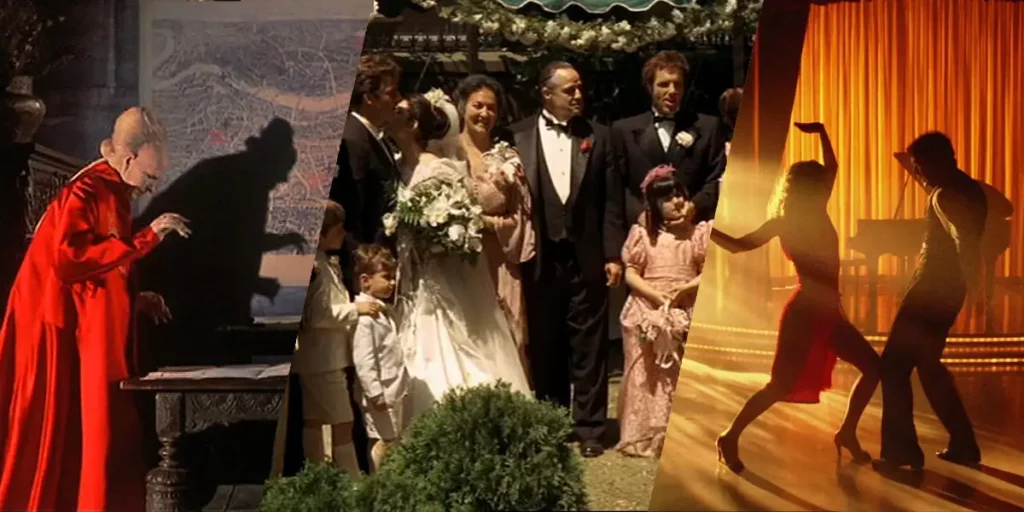Francis Ford Coppola has one of the most varied and fascinating careers of any Hollywood film director. We have ranked all of Coppola’s 24 movies from worst to best.
If Francis Ford Coppola had never directed another movie after The Godfather, his place in the pages of film history would be secure. Instead of resting on his laurels, Coppola set out to challenge himself and find complete artistic independence. In his 24 movies, here ranked from worst to best, he experimented with a far-reaching variety of different styles and genres.
Coppola is not one to whom you could apply the Death of the Author theory, and discuss his movies independently of his personal preoccupations and experiences. To a self-conscious, some may say megalomaniacal, degree he has positioned himself as an auteur, an artist of the cinema. No matter the variation in content or form, every one of Coppola’s films has a personal stamp. He is a person for whom the art was personal and the personal was art, and every one of his movies tells the story of a man determined to make art on his own terms.
To pregame for the release of Megalopolis, Coppola’s first film since 2011, we decided to do a marathon of his work. Here lie our findings, all 23 of Coppola’s filmed work ranked from worst to best, not including the 1962 soft-core Tonight for Sure, or his section of the 1989 omnibus New York Stories “Life without Zoë.”
24. Jack (1996)
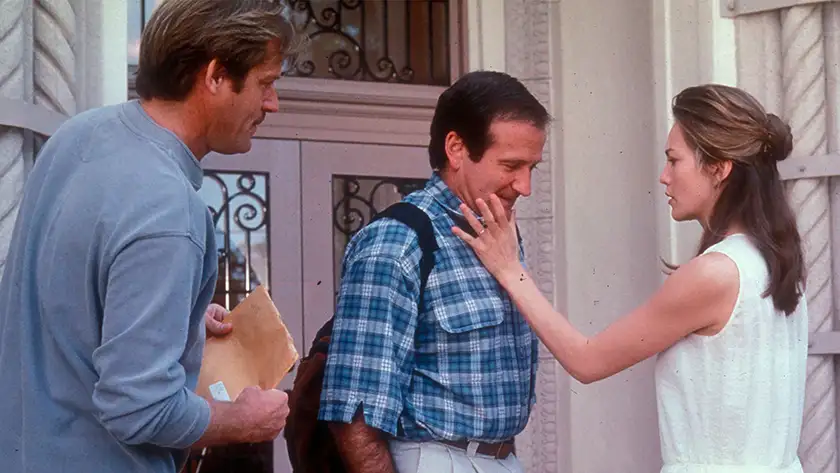
The only movie directed by Francis Ford Coppola without any sort of redeeming quality. Jack is a grating, mawkish, tremendously unfunny misfire. Usually the sight of Robin Williams brings a warmth to my heart, but in his performance as Jack, a 10 year old boy with a medical condition that makes him age at four times the usual rate, he indulges in all of his worst instincts. The movie bears no resemblance to reality or human behavior. It has no interest in what the experiences of a 10 year old trapped in the body of a grown man would be, but instead uses it as a springboard for crass comic bits. It’s a movie with little thought beyond its premise. The filmmaking behind the camera is all wet, as saccharine and colorless as a Disney Channel original movie. Coppola has no talent for broad comedy.
23. Captain EO (1986)
By virtue of playing at Disney Theme Parks from 1986 to 1998, the 17 minute Michael Jackson theme park attraction is probably the most viewed piece of media directed by Francis Ford Coppola. Coming off a run of box office flops and in dire financial straits Coppola got the directing job due to his old friend George Lucas, a Producer on the project. Coppola went all in on the music video, in his inimitable fashion, bringing in Vittorio Storaro for the lighting, Walter Murch for the editing, James Horner for the score, and the original budget of 11 million ballooned to anywhere between 17 million and 30 million.
Captain EO features Jackson as the titular character, a space traveler with a band of trusty sidekicks (straight out of the Star Wars comic side characters playbook). The crew’s spaceship crash lands on a planet overseen by an evil alien queen, played by Anjelica Huston. After performing two Jackson songs, “We Are Here to Change the World” and “Another Part of Me,” the group must restore peace to the planet and escape. Captain EO is not an essential part of Coppola’s career, but is worthwhile as a weird curiosity.
22. Finian’s Rainbow (1968)
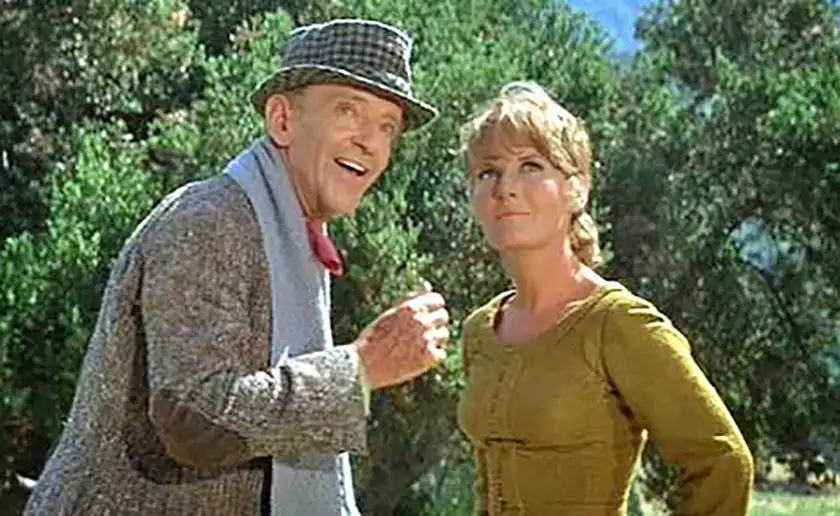
In Hollywood, it is currently very common for the young director of an acclaimed Independent feature to be plucked up and handed a piece of blockbuster IP. Consider the careers of Jon Watts going from Cop Car to Spiderman: Homecoming or Colin Trevorrow going from Safety Not Guaranteed to Jurassic World. That is not a new phenomenon. After the attention-grabbing You’re a Big Boy Now, Coppola was brought onto the superhero movies of the 1960s – the musical. Coming right as the musical bubble was beginning to burst, Finian’s Rainbow did nothing to convince audiences that they shouldn’t be watching The Graduate or Easy Rider instead.
Coming in at 144 minutes, Finian’s Rainbow is a leaden and overblown fairy tale about a pair of Irish Immigrants (Musical royalty Fred Astaire and pop star Petula Clark) with a crock of Leprechaun gold that helps to transform a small Kentucky valley. The songs are fine, and the movie offers the delight of watching Astaire dance, but that’s about it. Coppola attempts to give the movie a sunflower yellow cheerfulness, but it lacks the requisite lightness. It sinks under its own dead weight into corniness. And don’t even get me started on the racial politics.
21. You’re a Big Boy Now (1966)

You’re a Big Boy Now was Coppola’s film school master’s thesis. As a student film, it’s an astounding piece of work; as a theatrically distributed comedy, it’s merely serviceable. Adapted from a novel by David Benedictus, You’re a Big Boy Now is a The Graduate-like story of a neurotic young man venturing out into the Swinging Sixties. Bernard Chanticleer (Paul Kastner) is twenty years old, working for his father at the New York Public Library and living on his own for the first time.
Within a short period of time he meets two women, the prim and gentle Amy (Karen Black) and the wild go-go dancer Barbara (Elizabeth Hartman). As Amy pines after Bernard he only has eyes for Barbara who wants to use him to get back at the men who broke her heart. The movie is stylish and energetic, very inspired by the Nouvelle Vague and Richard Lester, but Coppola doesn’t seem comfortable with something so frothy.
20. Gardens of Stone (1987)
8 years after Apocalypse Now, Coppola returned to the Vietnam War for a slice of life look at the soldiers who work at Arlington National Cemetery. James Caan turns in a sensitive and layered performance as an aging career man who can’t seem to reconcile his blind love of the army with his disdain for the war. Almost reluctantly, he becomes a mentor for a naive young Sergeant (a soppy D.B. Sweeney) who wants nothing more than to go fight on the frontlines of Vietnam. Gardens of Stone lacks the narrative focus that it needs for its emotional punches to land, and so it ends up feeling stiff and heavy-handed.
19. Dementia 13 (1963)
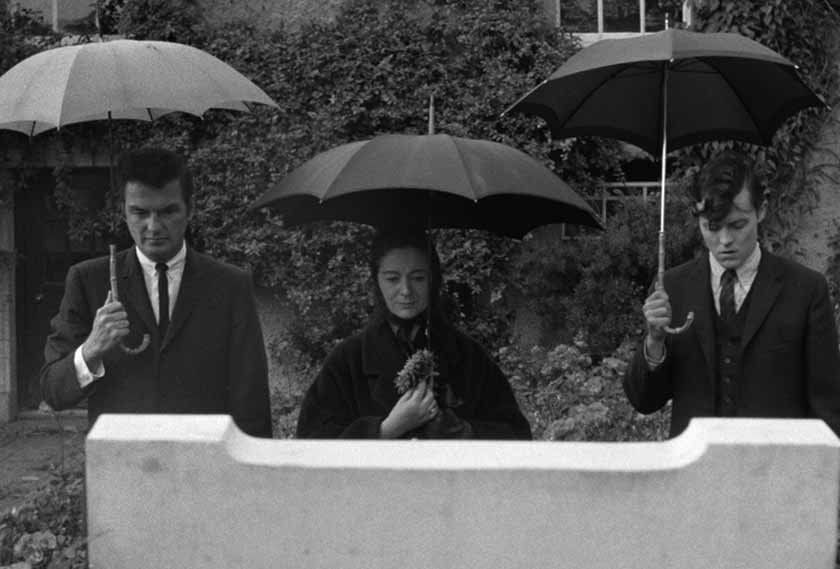
The first Francis Ford Coppola directed feature film. Made for the legendary movie producer Roger Corman with the money that Corman had left over from the budget of the movie The Young Racers and shot in a total of nine days, Dementia 13 was conceived as a cheapo exploitative riff on Psycho. It just so happens that the kid at the helm would turn into an extremely talented director. Dementia 13 is set in the Irish countryside, as a young woman (Luana Anders) travels to her husband’s familial mansion, hiding his recent death and scheming her way into her mother-in-law’s will. Her attempts at manipulation are hindered by an ax-wielding maniac loose on the property. From the opening scene Coppola demonstrates an ability to conjure atmosphere and sustain tension. He’s one to watch.
18. Twixt (2011)
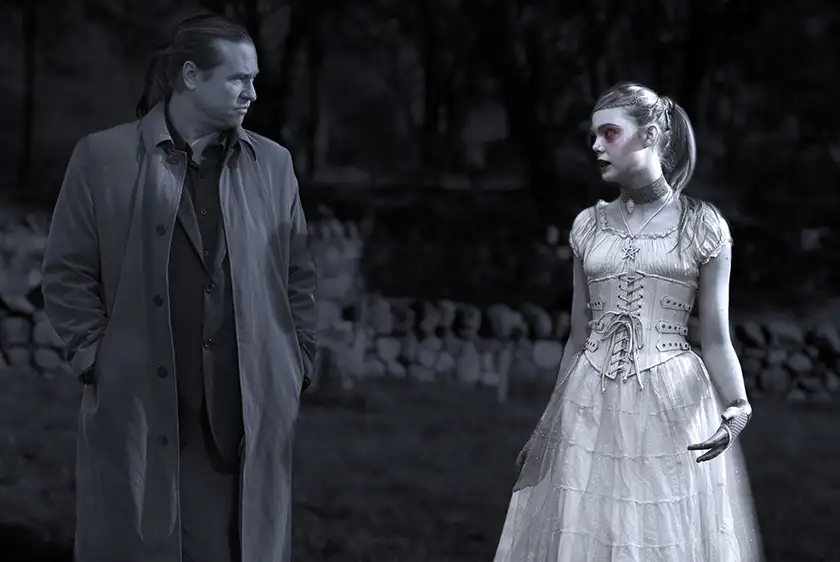
Coppola returns to his Corman horror movie roots with the experimental Twixt. The movie was born out of a nightmare that Coppola had and filmed in part of his own Napa Valley estate using digital cameras. Val Kilmer stars as Hall Baltimore, a horror movie writer who ends up in a dusty small town for a book signing. Intrigued by the spooky weirdness of the town, Baltimore discovers legends of vampires in the area and a possible serial killer. Many may get turned off by Twixt’s obvious low-budget and disjointed, dreamlike narrative style, but those on the right wave length will be treated to unsettling imagery and an emotional treatise on the power of art to process grief. The final scenes evocation of Coppola’s son Gian-Carlo’s 1986 death is hauntingly powerful.
17. Bram Stoker’s Dracula (1992)
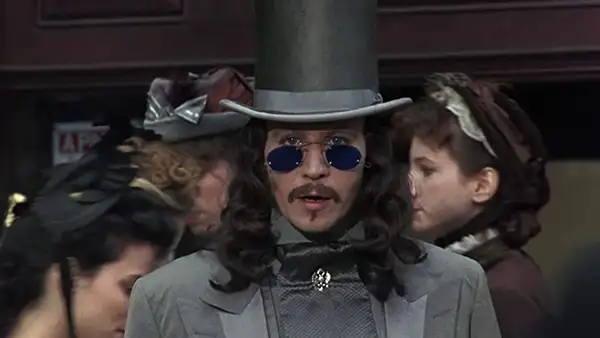
While the movie bills itself as Bram Stoker’s Dracula, it bears only a cursory resemblance to the classic novel, taking a work of horror and mystery and turning it into a turgid romance. It’s a movie made in purple prose. In the late Victorian Era Jonathan Harker (Keanu Reeves), a young solicitor, travels to Transylvania to arrange the real estate acquisitions of a certain Count Dracula. At the same time back home in England, Harker’s fiancée Mina Murray (Winona Ryder) begins to notice disconcerting changes in her best friend Lucy Westenra (Sadie Frost).
The production design is lush, creating a fantastical world within its images, but the storytelling is pitched at a heaving, operatic tone. I find the “love” story between Dracula and Mina to be utterly ridiculous. While Reeves has gotten lashings for his performance over the years, no one really comes off any better. None of the actors perform as though they are in the same movie. To put it simply, Bram Stoker’s Dracula has a bad case of style over substance.
16. One From the Heart (1981)
The fulcrum point for Coppola’s career. The first movie produced by Zoetrope Studios, One From the Heart was a leap into the complete artistic freedom and independence from Hollywood Studios that Coppola had long dreamed of. Unfortunately it was not to be. The financial failure of One From the Heart (grossing $636,796 on a $26 million dollar budget) sent Coppola and Zoetrope Studios into a financial tailspin. Coppola would be forced to sell the Studios in 1984 and file for Chapter 11 bankruptcy for the first of many times.
One From the Heart is a musical non-musical about the disappointments and dreams of a couple portrayed by the dull and uncharismatic Frederic Forrest and the winsome and effervescent Teri Garr. After splitting on their 5th anniversary the two had simultaneous misadventures in a fantastical Las Vegas, recreated lavishly within Zoetrope Studios. The characters are thoroughly unpleasant (and stuck in a relationship that is abusive, but I’m unclear whether the movie understands that) and completely subsumed by the garish visuals. There are moments of movie magic, such as Nastassja Kinski’s tightrope walk and Garr’s dance with Raul Julia, but they are brief flashes in the midst of flamboyant spectacle and dull characterization.
The production design is lush, creating a fantastical world within its images, but the storytelling is pitched at a heaving, operatic tone. I find the “love” story between Dracula and Mina to be utterly ridiculous. While Reeves has gotten lashings for his performance over the years, no one really comes off any better. None of the actors perform as though they are in the same movie. To put it simply, Bram Stoker’s Dracula has a bad case of style over substance.
15. Megalopolis (2024)
You will never be able to forget watching Megalopolis. Inspired by early science fiction films, such as Fritz Lang’s Metropolis and his own interest in the Roman Empire, It was first conceived of by Coppola at the end of the production of Apocalypse Now in 1977 and over the next five decades filled copious numbers of notebooks with notes and script pages. He self-financed the project with the money he received from selling his wine company in 2021.
Setting aside the production history and looking at the movie on its own, Megalopolis is a maximalist, overstuffed and captivating look at the follies and ambitions of self-proclaimed Great Men. Adam Driver grounds the movie with a charismatic and Shakespearean performance as Architect Cesar Catalina, a brilliant architect who dreams of turning the city of New Rome (a futuristic city rendered through bad CGI) into a Utopia. However, instead of greatness, his ego may lead to the metropolis’s downfall.
With Megalopolis, every idea, dream and ambition of Coppola’s is thrown at the screen, leading the audience through the golden streets of New Rome with a breathless intensity and singular vision.It’s safe to say that many things about the movie don’t work, but, despite that, it’s difficult to not be enthralled.
14. The Godfather Part III (1990)

Reviled by critics and audiences alike upon release, The Godfather Part III is both better than its reputation and not good enough for a reclamation project. It’s a mediocre movie that has the misfortune of trying to recapture the magic of two of the greatest movies ever made. Catching up with the Corleone family 20 years after the finale of Part Two, the movie begins with Michael Corleone, a successful businessman, being honored by the Vatican for his charitable services.
Wracked with guilt, he has strived to make the Corleone family business legitimate. But “just when I thought I out they pull me back in,” and Michael finds he cannot be redeemed of his past sins and escape the mafia. While the filmmaking doesn’t have the same fiery passion as the previous installments and the storytelling struggles to balance the family and the organized crime elements, there are moments of power, such as the final Opera sequence, that would be a jewel in anyone’s filmography.
13. The Outsiders (1983)
In 1980, Fresno, California High School Librarian Jo Ellen Miskasian wrote a letter to Francis Ford Coppola explaining that her students were so impressed by S.E. Hinton’s YA Novel “The Outsiders” that they hoped it would become a movie, and believed that he would be the right filmmaker for the job. Included with the letter was a petition with 110 student signatures. Coppola was moved by the letter and set the movie into motion.
The Outsiders is a conventionally told, sentimental story about street gangs in 1950s Oklahoma, centering around the conflict between two groups, the poor “greasers” and the rich “socs.” It’s about as realistic a depiction as West Side Story, but Coppola tells the story with a moving sympathy and romance. The Outsiders is most notable for its cast, a veritable “who’s who” of 1980s stardom- Patrick Swayze, Rob Lowe, Matt Dillon, C. Thomas Howell, Ralph Macchio, Diane Lane, Emilio Estevez and Tom Cruise, all before they went off to lead their own movies.
12. Tetro (2009)
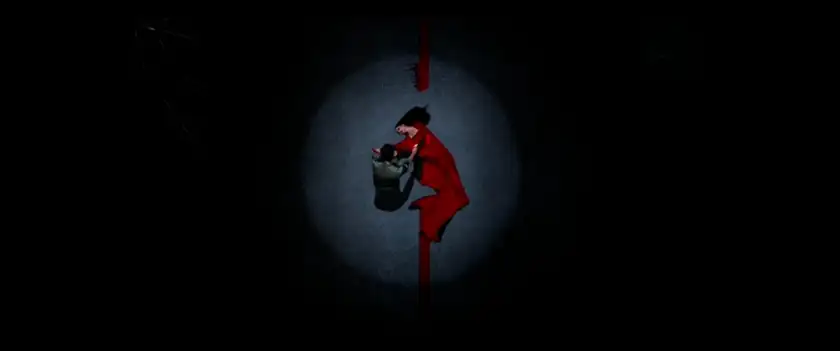
Coppola looks at both the history and future of cinema, using digital cinematography for the crisp black and white look of the family drama Tetro. It is an operatic melodrama about identity, artistic inspiration, and familial relations. In his first feature film role, Alden Ehrenreich stars as Bennie, a lost and yearning young man visiting his older brother Tetro (Vincent Gallo) living in Buenos Aires. The sons of a renowned classical conductor (Klaus Maria Brandauer), both Tetro and Bennie nurse creative ambitions, and this leads to jealousy, secrets and turmoil.
Between the two of them there is too much emotion for the one room apartment in which they reside. With frequent references to opera and the movies of Powell and Pressburger, there’s a theatrical streak to Tetro that fits the simple, archetypal story and arched performances. But Coppola’s style is all cinema, switching from black and white to shocking color at opportune moments, and moving the camera around with controlled madness.
11. Youth Without Youth (2007)
The third of what I like to refer to as Coppola’s Aging Trilogy, including Peggy Sue Got Married and Jack. Made after a 10 year break, Youth Without Youth is an opulent and dense magical realist tale about second chances. Tim Roth stars as a 70 year old linguist living in 1938 Budapest, who after being struck by lightning finds himself revitalized to a 40 year old. In addition to the de-aging he develops psychic powers. His experiences attract the attention of the Nazis, and so the linguist flees in hiding. While traveling through Europe the linguist encounters the reincarnation of a lost love (Alexandra Maria Lara).
Youth Without Youth feels like walking through a library; the color palette is an autumnal mahogany and the actors speak in hushed tones. The storytelling is opaque, but all the more emotionally affecting and philosophically rewarding.
10. The Rainmaker (1997)
After the embarrassment of Jack, Francis Ford Coppola needed a hit. Only 90s kids remember, but one of the biggest tickets at the box office was a John Grisham adaptation, with Superstar-led hits like The Firm, The Pelican Brief, A Time to Kill and The Client. Coppola’s turn in the arena with The Rainmaker is polished and perfectly serviceable popcorn entertainment. A pre- Good Will Hunting Matt Damon stars as Rudy Baylor, a clear-eyed young lawyer in Memphis working for a disreputable, ambulance-chasing firm.
Slowly and methodically, the movie takes the viewer through Baylor’s first cases, chief among them a suit against an insurance firm for a terminally ill Leukemia patient. The Rainmaker is a little slow to get started, and the Damon and Claire Danes relationship perhaps didn’t need to turn romantic, but once it gets to the courtroom and surprise witnesses are being called it’s hard not to be enthralled.
9. Peggy Sue Got Married (1986)
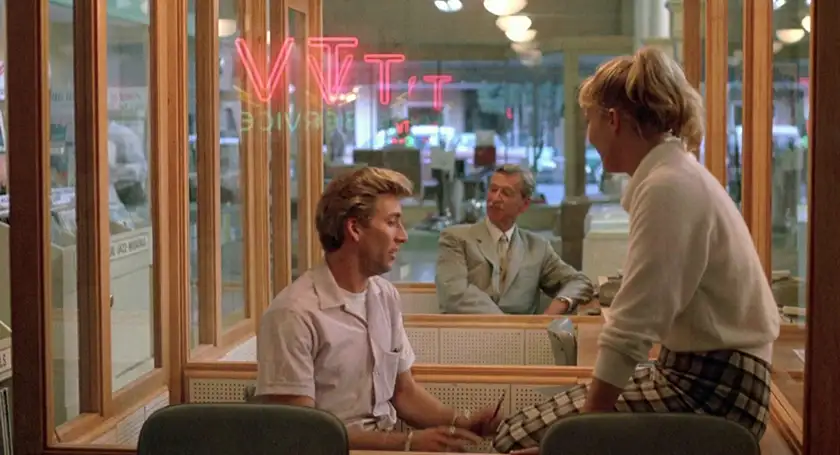
Coasting off the success of Back to the Future and the general nostalgia for the 1950s in the 80s, Peggy Sue Got Married is a charmingly goofy and frothy comedy. On the whole Coppola has not demonstrated a particular talent for comedy, but here he has just the right touch. Peggy Sue Bodell is unhappy, reeling from a recent separation from her husband (Nicolas Cage) and looking back at her life only to find mistakes and missed opportunities.
While attending her 25th High School reunion, Peggy Sue faints and wakes to find herself transported back to her Senior Year in 1960. Able to look back at her friends and choices with the blessing of twenty five years of hindsight, Peggy Sue is offered the chance to make changes. Turner’s performance seamlessly blends together the 18 year old and the 43 year old, and finds the humor within heartwarming sentiment. Peggy Sue Got Married is a thoughtful and warm comedy that will only get better as you age.
.
8. Tucker: the Man and His Dream (1988)
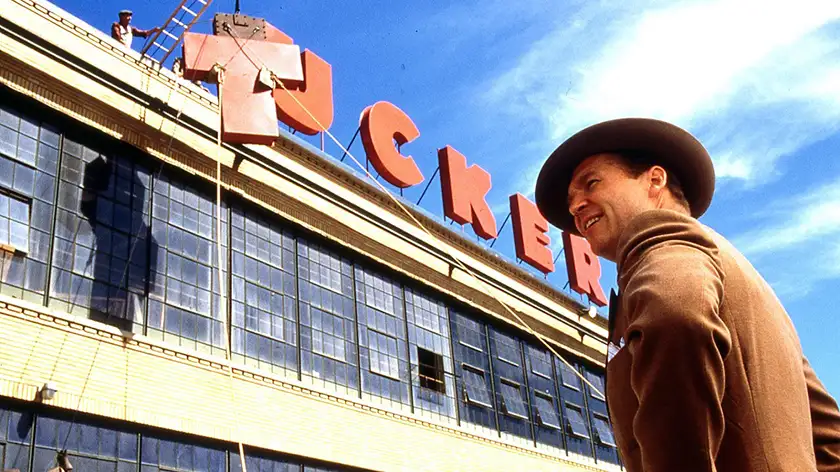
As part of the New Hollywood film movement, Coppola sought to innovate and democratize the way that movies are made, while at the same time he had a little boy’s love of Classic Hollywood. Tucker: the Man and His Dream is Coppola’s whimsical and whole-hearted tribute to classic Old Hollywood, in particular, the movies of Frank Capra. There’s a tinge of the personal running through Tucker, with Coppola using the story of real-life inventor Preston Tucker as a metaphor for the failure of American Zoetrope and his experiences as an artist in Hollywood.
Jeff Bridges, with a beaming grin, stars as Tucker, a perennial optimist who hopes to create “the car of the future;” a revolution in safety, with seatbelts, disc brakes, and headlights that swivel with the car turn, among the novel features. Tucker’s dreams are held back by his own lack of business acumen, along with the interests of politicians and the jealousy of other car manufacturers. It’s a bright, beaming piece of crowd pleasing entertainment that finds the silver lining in failure.
7. The Rain People (1969)
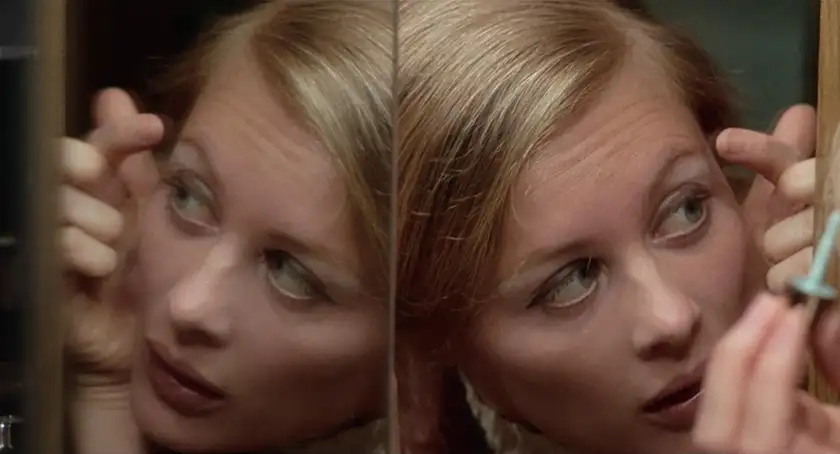
After the failure of Finian’s Rainbow, Coppola retreated from the bloat of Hollywood excess to the intimate, small-scale Indie The Rain People. Whereas most of Coppola’s movies tend to place their character’s in grand, operatic terms, The Rain People is an up-close-and-personal psychological study. One morning, pregnant housewife Natalie (Shirley Knight) wakes up, showers, makes her husband breakfast and leaves. She doesn’t know when she will be back or where she is going, only that she needs to find some sort of freedom.
Coppola’s Hofstra College classmate James Caan turns in a sensitive and lovely performance as Jimmy, a mentally challenged former football player that Natalie picks up as a hitchhiker. As Jimmy and Natalie drive through America there’s no narrative spine, only the movie observing the world around them and the characters that they meet. Coppola’s touch is impressionistic and bittersweet as the two new Don Quixote and Sancho Panza, Huck and Jim, George and Lennie criss-cross the country trying to find a place where they belong.
6. The Cotton Club (1984)

The Cotton Club is basically The Godfather with tap dancing. It’s a sprawling, jazz-infused epic about racism and cultural appropriation in the entertainment industry and the intersection of organized crime and show business. Centered around the titular 1920s Harlem Nightclub, The Cotton Club follows two performers; Dixie Dwyer (Richard Gere), a cornet player who becomes entangled with the mafia while on his rise to movie stardom, and “Sandman” Williams” (Gregory Hines), a tap dancer at the Cotton Club whose ambition butts up against the racism of the show business establishment.
The Cotton Club is able to create a full and rich world, with a wide net of colorful characters and sweeping, inviting camera movements. The musical numbers ran the risk of stopping the action dead in its tracks, but Coppola shows an instinctive knowledge of how to sustain high energy and utilize music to tell a story. Hines’ tap dancing is spellbinding. Make sure to watch The Cotton Club Encore, the Director’s Cut which is a marked improvement over the theatrical version.
5. Apocalypse Now (1979)
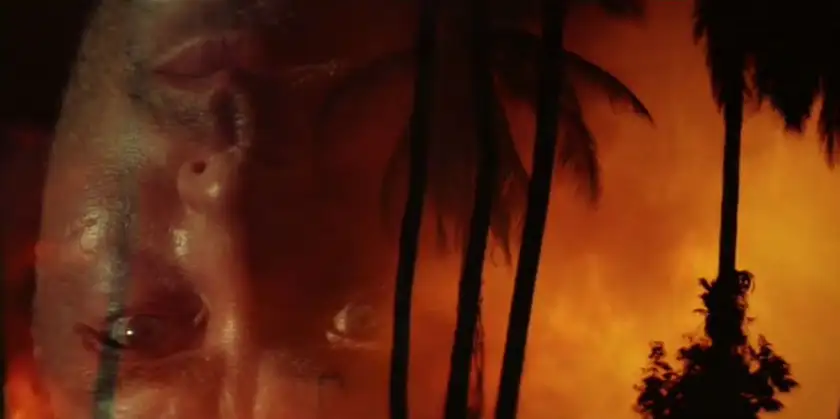
“My movie is not about Vietnam; my movie is Vietnam,” Coppola famously declared at a Cannes Film Festival press conference. I would not say that this bombastic statement is accurate, but it’s useful in illustrating the ambition and scale of Coppola’s undertaking. Apocalypse Now is a descent into madness, Dante’s journey through Hell, a vaporous and nightmare-ish vision of the Vietnam War.
Based on Joseph Conrad’s “Heart of Darkness,” Martin Sheen stars as Willard, a shell-shocked CIA Agent and Soldier who is sent down Vietnam’s Nung River into enemy territory in order to exterminate Captain Kurtz, the leader of an outpost in Cambodia. The languorous journey downstream is interrupted by surreal side quests, from a firebombing set to Wagner’s “The Ride of the Valkyries” to a visit from the Playboy Bunnies. Once you hear the revelation that Coppola struggled to find an ending for the movie, it’s difficult not to see many of these sequences as a deflection.
The movie has the common Coppola problem of getting swept up in the spectacle, which here in Apocalypse Now has the effect of turning the Vietnam War into a Boy’s Own Adventure. Still it’s impossible to be cognizant of any of these faults while watching the movie. It’s an enthralling, powerful miracle of a movie. After you have watched Apocalypse Now watch Hearts of Darkness: A Filmmaker’s Apocalypse the making-of documentary by Eleanor Coppola.
4. Rumble Fish (1983)
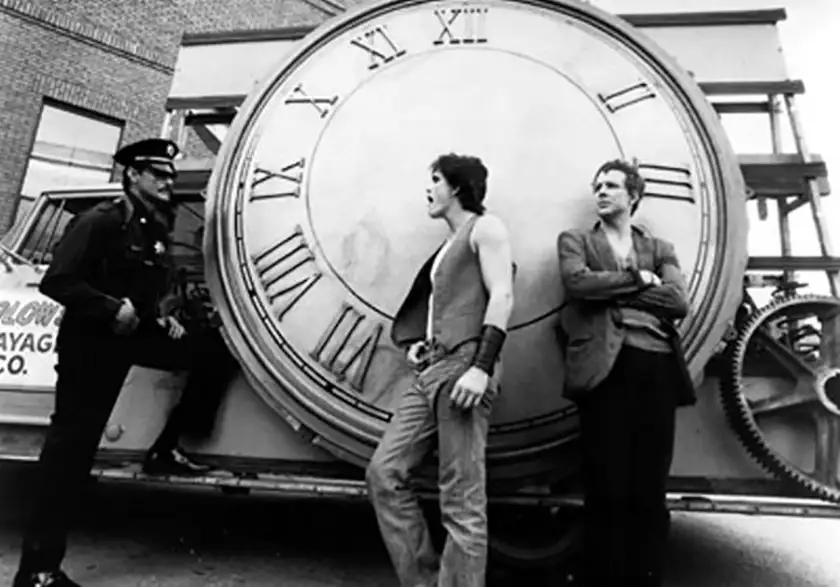
Rumble Fish is the second of Coppola’s adaptation of S.E. Hinton novels and shot back to back with the previous one The Outsiders. Described by the filmmaker as an “art film for teenagers,” Rumble Fish is an existential, expressionist, steam-filled look at the confusion and pain of the teen years. An aching and sensitive Matt Dillon stars as Rusty-James, a street tough searching for love and meaning in his life when his idealized older brother The Motorcycle Kid (Mickey Rourke) rolls back in town.
Shot in a haunting, film noir-ish black and white, Rumble Fish is pure visual storytelling, the images articulating feelings the characters are unable to voice. It’s a movie that is both mythical and intimate, grounded and stylized, external and interior. Every piece of Rumble Fish is consumed by the emotions of the characters, by the tragedy of their lives and the time that is passing. The despair of teenagers is frequently overlooked, but through the steam of Industrial Tulsa, Coppola knows exactly what Rusty-James is feeling.
3. The Conversation (1974)
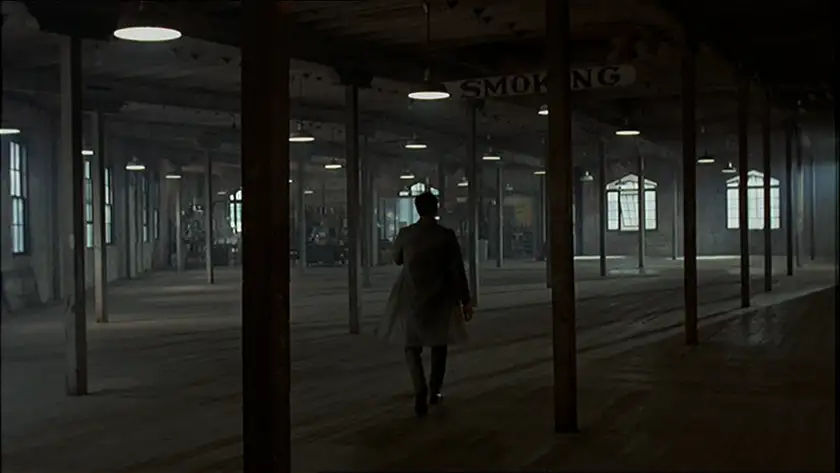
While people often discuss Steven Spielberg releasing Schindler’s List and Jurassic Park in 1993, Coppola gave us both The Godfather Part II and The Conversation in 1974. The achievement won Coppola two Best Picture and Best Director Oscar nominations. Both topical, coming out in the midst of the Watergate Scandal and news of FBI wire tappings, and prescient as we continue to lose privacy in our society, The Conversation is a taut, character-driven thriller about paranoia and surveillance.
Gene Hackman, in a remarkably reserved and internal performance, stars as Harry Caul, a lonely and private surveillance expert. He is hired to bug two young people (Frederic Forrest and Cindy Williams) as they walk in a San Francisco park. After he has recorded the conversation, Caul plays the tape and comes to believe that they are in danger of being murdered. Perhaps the murderer is the one that hired Caul? That would make Caul responsible for the possible deaths, wouldn’t it?
As pure thriller, The Conversation works masterfully, slowly involving the audience in figuring out its secrets, and it works on a second level as a moral tale, a study in guilt, regret and loneliness. The Conversation is a shadowy and ambiguous movie that feels like trying to make out the shape at the end of the dark, empty street.
2. The Godfather Part II (1974)
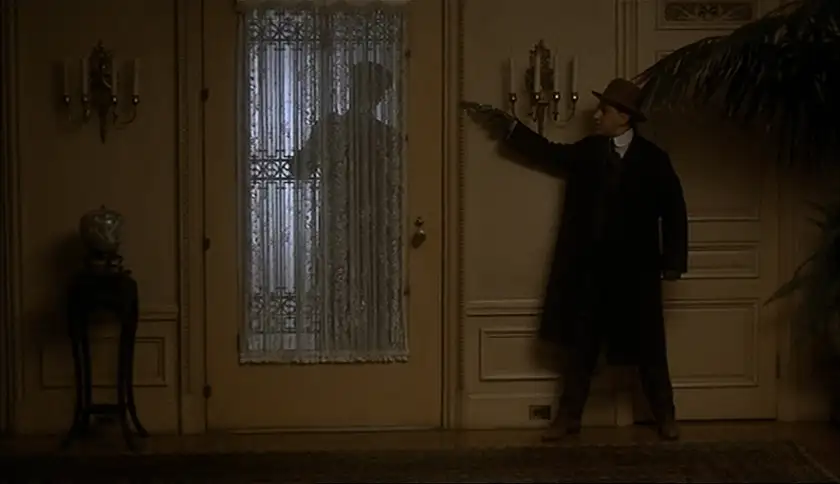
While compiling this list, one of the hardest decisions I had to make was whether Part One or Part Two of the Godfather Trilogy would be number one. They are equals, intertwined and enriching one another. On many occasions Coppola has stated his view that they are two parts of the same movie. Yet, there is none of the thrills and popcorn entertainment of the first part to be found here. Echoes and mirrors of scenes in the first appear time and time again, but they are played in a funereal minor key.
The second part elaborates on the saga’s basic idea of capitalism turning all of us into gangsters as it charts Michael Corleone’s (Al Pacino) struggles for power and destroys his own soul. Where the first part celebrated family and loyalty Michael has descended into betrayal and paranoia. Pacino’s performance is like that of a simmering volcano, powerful through what is being withheld from the audience.
At the same time, the movie flashes back in time to a young Vito Corleone (Robert de Niro), as he edges toward a life of crime and the building of an empire in the tenements of New York City. The storytelling is dense and sophisticated, but Coppola makes it feel oh so very clear. The two parts speak to one another, illustrating the price of assimilation and what it really takes to achieve the American Dream.
1. The Godfather (1972)
Few movies have been able to work their way into the warp and woof of popular culture as entirely as The Godfather. Even if you have never seen even a clip from The Godfather, it’s most likely that you have heard quotes and seen images from the movie. It has become part of the firmament, a way that we communicate with one another. Initially hesitant to take on the project, Coppola was able to take a trashy pulp novel and turn it into something close to Shakespeare; a sweeping, epic tale of family, crime, corruption and the Immigrant experience in America.
The youngest son of the Corleone family, Michael (Al Pacino) has just returned from fighting in World War II, and is not part of the family business, the Mafia. When his father, Don Vito Corleone (Marlon Brando) is gunned down by a rival gang in the middle of the street, Michael is driven by honor to get revenge. Scene after scene is legendary; the opening speech by the undertaker Bonasera, the movie producer waking up to a Horse’s head beside him in bed, the instruction to “leave the gun and take the cannoli,” Sonny Corleone’s (James Caan) ambush at the toll booth, the cross-cutting between assassinations as Michael takes out the rival gang leaders.
Yet, The Godfather is not just a collection of icons, of images. With the help of Gordon Willis’s shadowy, mahogany cinematography, Coppola creates an entire ecosystem within this movie. While the Corleones may engage in murder and other sundry crimes, with their kitchen table covered in chinese take-out boxes, and ribbing between the siblings, it’s a very recognizable family. Extras appear in the background of multiple scenes so that you begin to recognize them. The tight and punchy dialogue is slangy but never incomprehensible, making the audience feel as though they already know what it means to “go to the mattresses” and have heard the job requirements for a consigliere.
Coppola’s direction is soaring and precise, never stiff and dated. It flows from one scene to scene, making for one of the shortest 175 minutes ever. The Godfather is a movie that feels alive.
Megalopolis had its World Premiere at the Cannes Film Festival on May 16, 2024.

